HTP Combi Boiler Adds Heating Security for New Construction Project
By Thomas Renner
In Waterboro, Maine, a community of slightly more than 8,000 residents, homeowners have to be prepared for the worst a winter storm can bring.
For six months out of the year, the daily low-temperature average dips below the freezing point. Snow? You betcha. In 2015, a January storm dumped 27 inches on York County, where Waterboro is located in southern Maine. In an average year, residents cope with more than five feet of snow during the winter months.
When Kyle Lagasse installed a heat and hot water system for a new construction, the property owner didn’t want to take any chances on a heating malfunction. Lagasse installed a heat pump as the primary source but supplemented the 2,500-square-foot house with a HTP combi boiler.
“They wanted a backup in the house,’’ Lagasse said. “A lot of homeowners are using heat pumps, but sometimes their performance in low temperatures can be impacted by snow and ice.”
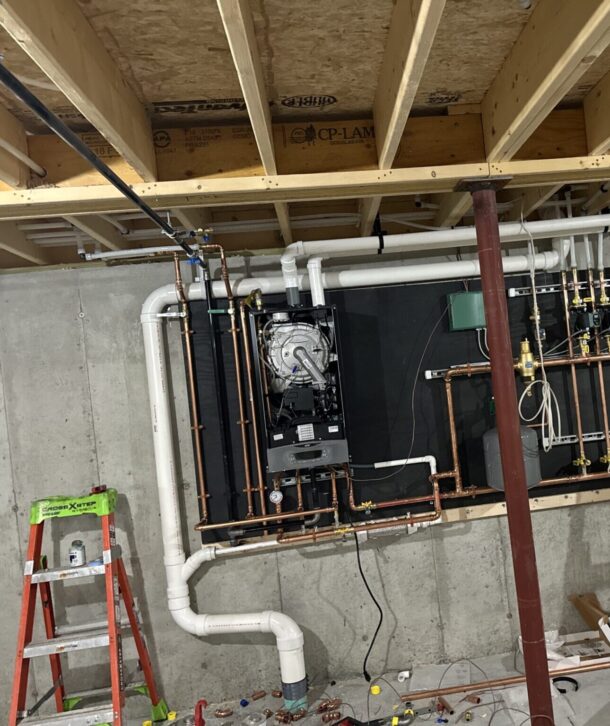
A newly-constructed 2,500-square-foot home in Maine includes an HTP combi boiler, which serves as an important backup to a heat pump.
Heating Hurdles
Lagasse jumped at the chance to take on a new construction project, but he also faced some tricky challenges in designing and installing the system for the 4-bedroom home.
The primary issue Lagasse faced was an open concept living area that included a fireplace and built-in units that limited the amount of space for baseboard heat. “When we did the heat calculations, we determined we needed 9-inch-high hydronic baseboard units,’’ Lagasse said. “That gives off the twice the value. We made sure to balance the heat with the BTUs that we needed from the boiler.”
He faced a similar issue in the master bathroom, where occupied wall space reduced the amount of room for baseboard heat. “We have to find a solution to have enough heat even when there is not a lot of available wall space,’’ Lagasse said.
Lagasse worked around the issue with low temperature, low profile baseboard heating units that have minimal intrusion on wall space.
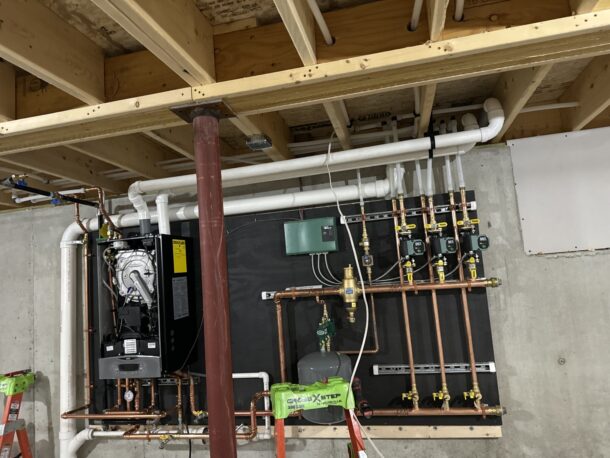
Backup Plan
While the heat pump is the primary heat source for heat, Lagasse and the homeowner felt it was important to have a secondary heat and hot water source.
Lagasse selected the HTP ELU-150WCN, a combi unit that delivers a maximum of 120,000 BTUs per hour for heating and 150,000 BTUs per hour for hot water.
The HTP unit provides up to 96 percent thermal efficiency and has an 11:1 turndown ratio that limits short cycling and provides efficient energy consumption.
“Having a combi unit was an important part of the selection process,’’ Lagasse said. “The house is set up pretty well with the heat pump for heat, but this is a way to have heat and an on-demand hot water system.”
Heat pumps work by pulling heat from the air outside and transferring the heat into the air circulating throughout the home. They are most effective in mild climates with moderate temperatures. When temperatures drop significantly, heat pumps work harder to extract heat from the outside air, reducing efficiency. Snow and ice can also hinder the effectiveness of heat pumps.
One of the other features that make the HTP unit a good solution for the project is a heat exchanger that ensures maximum quality at the heart of the boiler. “In Maine, one of the most unusual challenges is the water that’s coming in is much colder,’’ Lagasse said. “It takes hot water longer to heat up. That’s not going to be a problem with this unit.”
Lagasse also finds service from Tom Protasewich, his local HTP rep working for Emerson Swan, helpful in finding solutions to the challenges he regularly faces on the job. The unit also comes with HTP Link, a software feature that enables remote monitoring of the appliance and system.
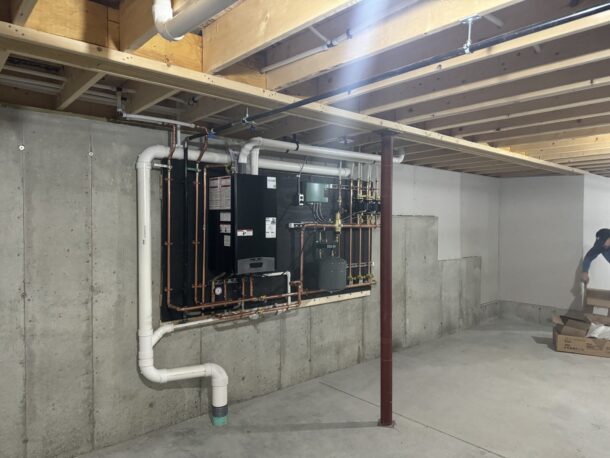
The HTP unit provides up to 96 percent thermal efficiency and has an 11:1 turndown ratio that limits short cycling and provides efficient energy consumption.
Bringing the Heat
During the construction phase, the HTP boiler helped bring heat to the house as workers established drywall, painted rooms and applied other final touches before the owners moved in. The project took slightly more than two days to install and establish multiple zones.
“The basement is all open at this point and they don’t have a dedicated mechanical room,’’ Lagasse said. “It’s one of the first things people see when they visit the house. The homeowners made a good choice, and I think the heating and hot water solution will serve them well.”
Thomas Renner writes on building, construction and other trade industry topics for publications throughout the United States.

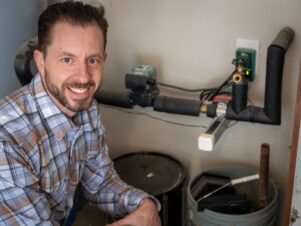

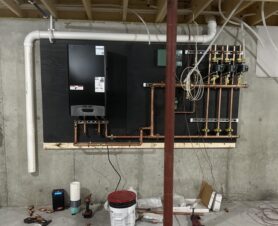
Join the conversation: